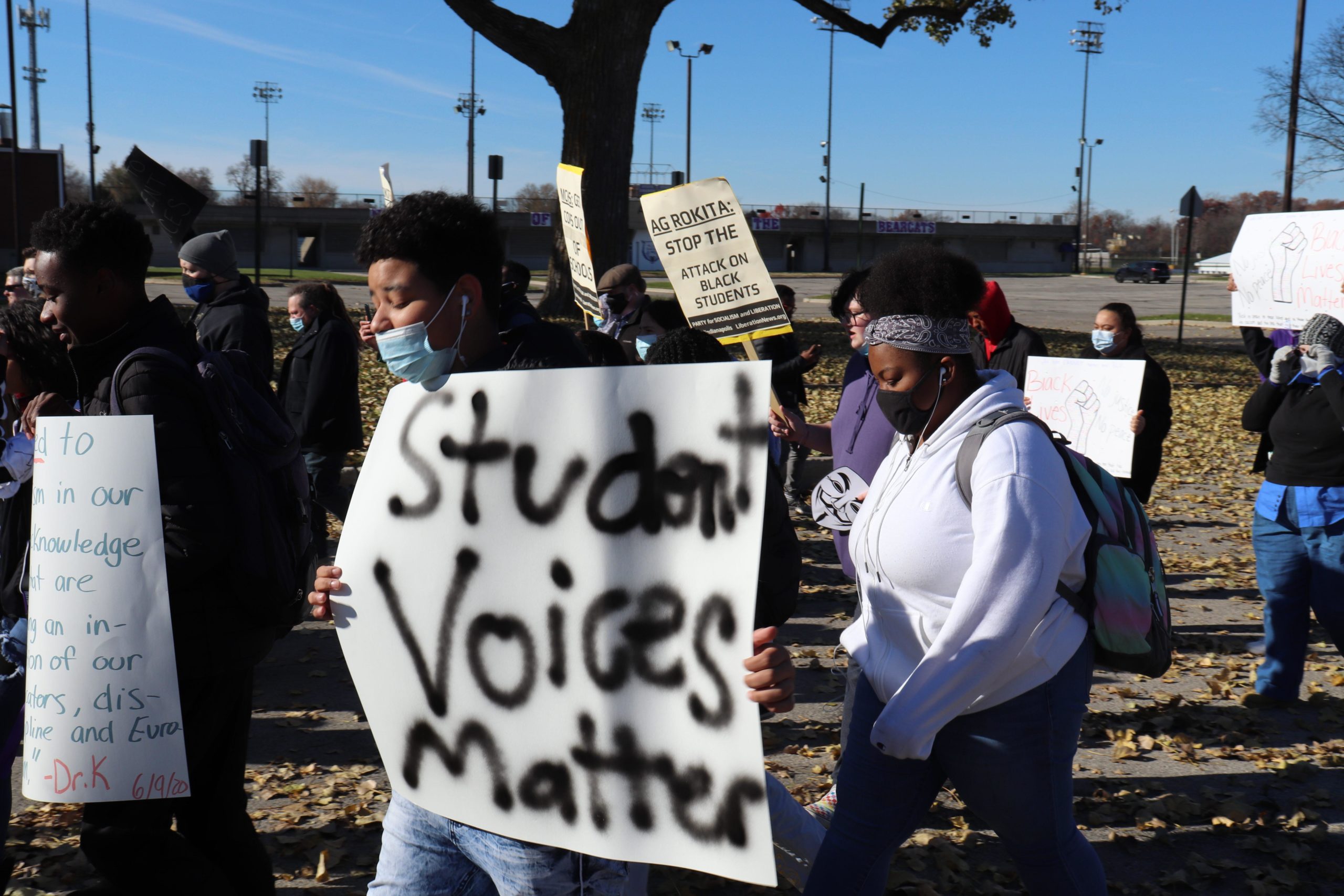On November 11, Indiana Attorney General Todd Rokita issued a letter, Official Opinion 2021-2, that labels Black Lives Matter a “political organization.” This is a cowardly attempt to silence students and teachers who have seized the opportunity, opened by the massive uprising against racism in summer 2020, to discuss the background, causes and effects, and ongoing reality of anti-Blackness and racist oppression in the United States as well as possibilities for liberation.
Rokita relies on a spurious set of arguments to bolster this effort to suppress studying American history. For example, he conflates all Black Lives Matter groups with the Black Lives Matter Global Network Foundation (“BLMGNF”) and its political action committee. Rokita argues BLMGNF and its PAC are one in the same because “a former Executive Director and co-founder of BLM is also a co-founder of the BLM PAC, making it further difficult to argue the two are separate and distinct.”
Most alarming is his attempt to completely silence discussion of Black Lives Matter or other progressive contemporary issues in schools, under the guise of recommending that schools adopt a content-neutral blanket ban of all political discussion—or else be forced to give a platform to fascism should Black students dare assert that their lives matter and that they deserve to live with dignity. Forcing Black students and students of all oppressed nations to defend their existence is traumatic and disruptive to a safe school environment.
AG’s letter already used against teachers, students
Rokita targets teachers explicitly by citing cases in which teachers were fired for sharing their political opinions with students where these dismissals were upheld, including one Indiana case in which a teacher volunteered this information in response to a student inquiry during a “current events” lesson (Mayer v. Monroe County Community School Corporation). At a time when a critical teacher shortage is disrupting education for students across the state, Rokita is signalling a willingness to worsen the situation by supporting schools for firing teachers for answering students’ questions about how to relate to the real and changing world.
This danger to student studying and teacher professional judgment is not some abstract potential—it has already affected studies in Muncie. Citing Rokita’s letter as justification, school administrators at Muncie Central High School censored student artwork created in response to a prompt connecting the graphic novel V for Vendetta with current events. After the posters had been up for several days, cops became upset over a student’s copy of a Carlos Latuff drawing in a presentation that was critical of police and presented factual reasons for this criticism. The school responded by censoring the student’s work. This triggered a walkout followed by multiple days of e-learning, culminating a half-day on Tuesday followed by a march from the high school to Muncie City Hall, where students spoke out against the censorship.
The poster did not cause the interruption to school—the overly sensitive response by police to factual criticism created the disruption, in the form of unwarranted censorship, that led students to assert their right to protest and assert that Black lives do indeed matter. The artwork should not be removed, the cops should! This is even backed up by Rokita’s letter: “Not only can a school corporation not prohibit non-disruptive expression of political expression by students, (emphasis added) it also cannot pick and choose what political speech it wants to promote and what speech it wants to suppress.”
Letter represents dangerous far-right attack on education
Rokita has, despite a rhetorical veneer of neutrality, laid out a legal framework for his far-right allies to attempt to muzzle teachers and students who advocate—or even try to discuss—progressive political ideas or practice. He gives a weapon to his fascist supporters and a threat to school boards across the state: Suppress all political discussion, because if you don’t, right-wing social forces will drag you to court in costly lawsuits over the slightest pretense that you are suppressing right-wing political speech.
This letter is a shot across the bow and a political orientation for the far right: he consistently refers to court cases that establish, in legal practice, that teachers are hired by school boards to teach a curriculum specified by that board. As the far right whips up political fervor and action against school boards across the country, the danger of this attack on academic freedom and the ability for teachers and students to practice values of humanity and political participation cannot be understated.
Join us by signing your name to the petition demanding Rokita rescind Official Opinion 2021-2 and issue a new statement clarifying that Black Lives Matter is a social movement larger than and independent from BLMGNF and its affiliated political action committee, and that affirming the importance and dignity of Black lives in view of the long, anti-Black history of this country and this state is an important step to heal divisions and are not grounds for dismissing teachers, punishing students, or disrupting schools.
We are currently building a list of state standards and a library of resources to serve as a foundation by which teachers and students should feel empowered to discuss the movement for Black lives, the history of white supremacy, including how it has impacted Black and Indigenous nations as well as Latino, Asian, and other oppressed peoples, including LGBTQ people, Jewish people, Communists and socialists, Catholics, and other social groups; and to imagine and practice the future of multinational liberation.
[wpdatatable id=1]




